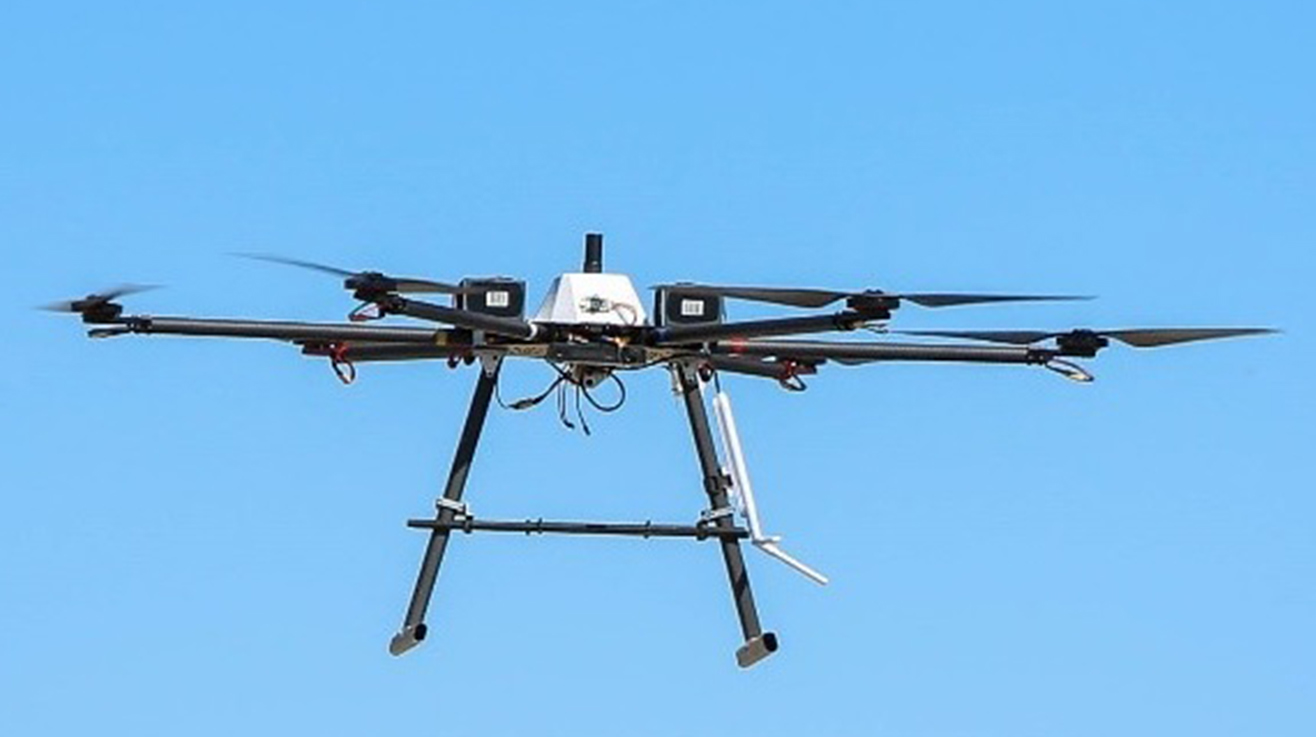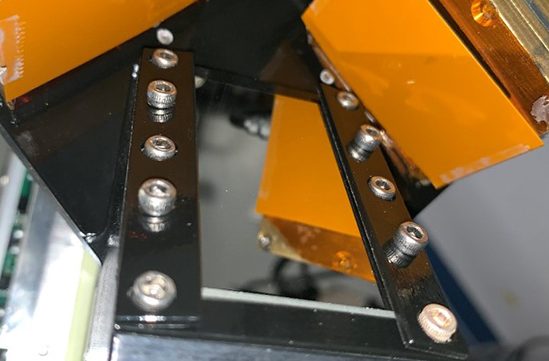The NNSS’ X-ray Polarizing Beam Splitter (XRPBS) was named a winner of the 2020 R&D 100 Awards. The Aerial Reconnoiter Using Unmanned Systems (ICARUS) was a finalist.
The award-winning innovation recognized, the XRPBS, has the ability to separate an x-ray beam in two in order to measure each polarized beam simultaneously, which will be used for diagnostics within the NNSA enterprise. Developed in partnership with Sandia National Laboratories, Argonne National Laboratory and EcoPulse, it is the first x-ray polarizing beam splitter in existence.
“I see it as a diagnostic that will be involved with many different types of experiments and scientific research facilities,” said NNSS Distinguished Scientist Howard Bender. “There is a continual advancement of these high-synchrotron resources.”
ICARUS equips unmanned aircraft systems with a payload of radiation, chemical, optical, LIDAR, and photographic detectors. The technology, developed by the NNSS in partnership with Unmanned Systems, Inc., H3D, Inc., and Virginia Tech, can be viewed in this video.
“ICARUS is an intelligent unmanned aerial autonomous system,” said Bender. “It provides an unmanned capability to do some of the dull, dirty, dangerous, and sometimes deep work where you don’t want to send any type of human system – for example, a serious incident involving hazardous materials.”

Both ICARUS and XRPBS were developed through the Site-Directed Research and Development (SDRD) Program, the NNSS’ premier science and technology venue and primary source for discovery and innovation for national security missions.
The R&D 100 Awards is recognized among the most prestigious innovation awards programs in the science and technology fields. When considering submissions each year, the NNSS looks at unique innovative technologies that are commercially viable.
“We always look for a hook that we can communicate for what makes us say ‘wow,’” said SDRD Project Manager Leslie Esquibel.
The recognition serves as a way for the NNSS to raise awareness of its research and development initiatives.
“It’s recognition,” said Bender. “It’s prestige amongst our peers in terms of innovation capability to drive new solutions for technical challenges. It provides name recognition, publicizing our capabilities so other entities know who we are and what we do.”
The NNSS has won six R&D 100 awards for its 2018 Silicon Strip Cosmic Muon Detector, 2017 Geometrically Enhanced Photocathodes, 2013 KiloPower with LANL, 2012 Multiplexed Photonic Doppler Velocimeter, 2010 Movies of eXtreme Imaging Experiments (MOXIE) with LANL, and 2009 High-Resolution Holography Lens. The NNSS was also recognized as a finalist for its Falcon Plasma Focus in 2019 and Argus Fisheye Probe in 2015.
For more information about the NNSS’ SDRD Program, visit https://www.nnss.gov/pages/programs/SDRD.html.

